

| Now the university museum, this building was originally a residence which combines typical qualities in the Baroque architecture of Puebla--talalvera (or glazed, patterned tiles), figural panels in tile, and decorative ironwork. The human figures depicted on the tiles have been interpreted in several ways. One political explanation is that the figures represent the antipathy of the owner, Agustín Ovando de Villavicencio, toward the city government which denied him permission to build a three-story house. After gaining authorization from higher authorities, it is thought the figures mock the local authorities. This interpretation may not be too persuasive since these authorities were his associates and in fact other three-story buildings existed then in central Puebla. The more scholarly interpretations are that the figures are related to classical iconology, in particular Hercules, which had Christian and eventually indigenous syncretic interpretations as well. For this complicated subject see Erwin Walter Palm or this internet site. | 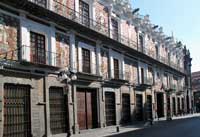
| |
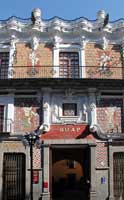
|
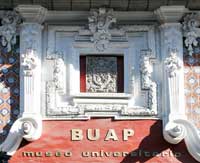
|
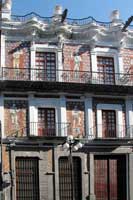 |
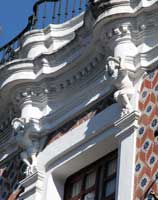 |
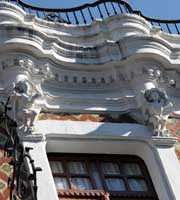 |
Atlantes in stucco |
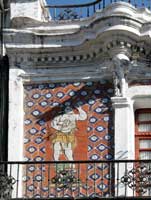 |
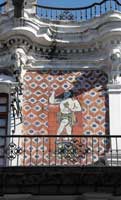
|
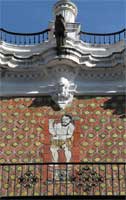
|
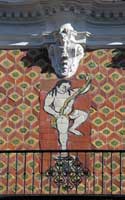
|
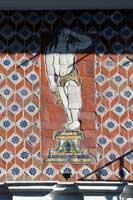
|
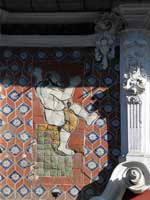
|
| Figures dance or hold animals--a snake, a bird, a pig? | 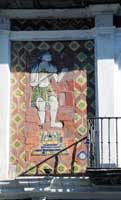
|
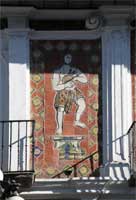
|
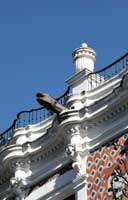
|
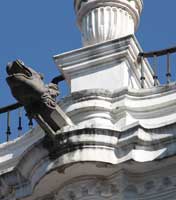
|
|
Go to page 2.
Work Consulted:
Guía. Arquitectura representativa de la ciudad de Puebla. Puebla: Centro para la Conservación del Patrimonio Cultural Tangible e Intangible A. C., L'Anxaneta Ediciones, 2008.
 Go to the Mexico Index.
Go to the Mexico Index.
 Click here to return to index of art historical sites.
Click here to return to index of art historical sites.
 Click here to return to index of artists and architects.
Click here to return to index of artists and architects.
 Click here to return to chronological index.
Click here to return to chronological index.
 Click here to see the home page of Bluffton College.
Click here to see the home page of Bluffton College.

